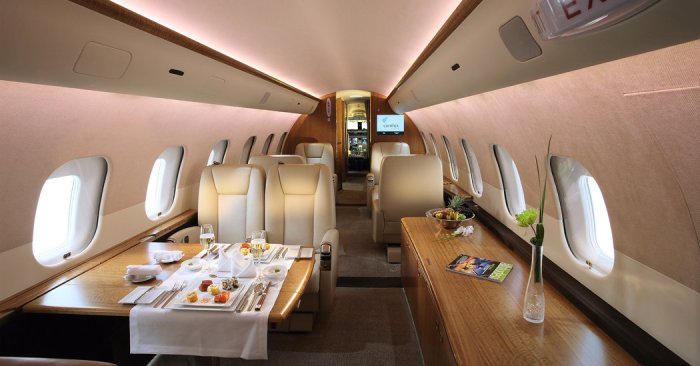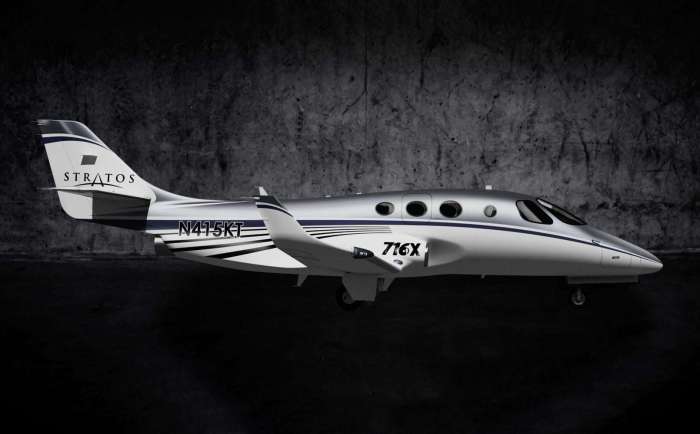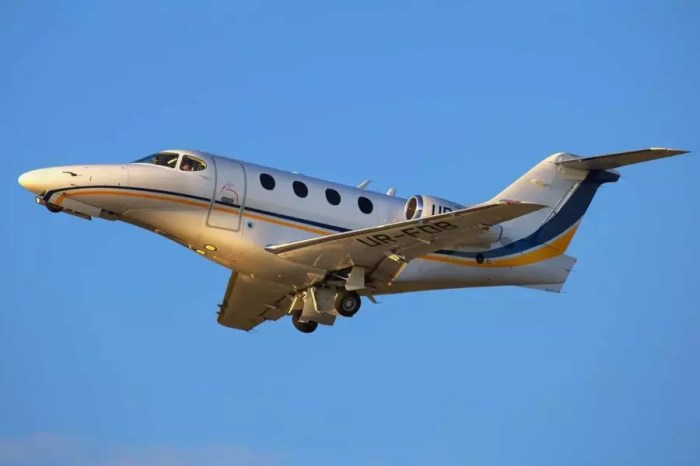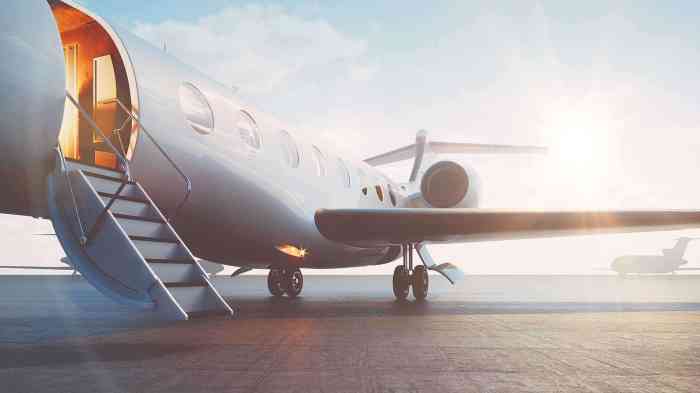Cheap Private Jet Flights: A New Era of Affordable Luxury

Cheap private jet flights, once a distant dream for most, are now becoming a tangible reality. The rising demand for private travel, driven by a desire for convenience, flexibility, and personalized experiences, has spurred innovation and competition within the aviation industry.
This has led to the emergence of various affordable options, making private jet travel accessible to a wider range of travelers.
From entrepreneurs seeking seamless business travel to families yearning for luxurious vacations, the appeal of private jets is undeniable. The allure of bypassing crowded airports, enjoying personalized service, and reaching destinations with unparalleled speed has fueled the growth of this segment of the aviation market.
Understanding the Demand
The rise of cheap private jet flights is a recent phenomenon driven by a confluence of factors, including technological advancements, changing consumer preferences, and evolving business needs. This trend is not just about luxury; it’s about accessibility and efficiency, catering to a diverse range of travelers seeking tailored and convenient travel experiences.
Types of Travelers Seeking Affordable Private Jet Options
The demand for cheap private jet flights is fueled by a diverse group of travelers with varying needs and motivations. Here are some of the key types:
- Business Travelers: Executives and business owners are increasingly turning to private jets for their time-sensitive travel needs. The ability to bypass crowded airports and streamline their schedules translates to increased productivity and efficiency.
- Leisure Travelers: The appeal of private jets extends beyond business. Leisure travelers are attracted by the convenience and flexibility offered by private jet services, allowing them to explore destinations without the constraints of commercial flights.
- Groups and Families: Private jets provide a more comfortable and personalized experience for groups and families, especially when traveling with children or elderly relatives. They offer the flexibility to adjust itineraries and travel to destinations not served by commercial airlines.
- Medical Travelers: Private jets are often utilized for medical travel, enabling patients to access specialized medical care or treatment quickly and efficiently. The speed and privacy offered by private jets can be crucial for time-sensitive medical situations.
Industries Utilizing Private Jet Services
The adoption of private jet services is not limited to individuals. Several industries are increasingly relying on private jets for their operations:
- Real Estate: Real estate professionals, particularly those dealing with high-end properties, often use private jets to facilitate client meetings, property viewings, and closing deals in remote locations.
- Sports and Entertainment: Athletes, musicians, and other celebrities rely on private jets for their demanding travel schedules, enabling them to reach multiple locations efficiently while maintaining privacy and comfort.
- Technology and Finance: Companies in the technology and finance sectors, characterized by fast-paced operations and global reach, utilize private jets to facilitate business meetings, investor relations, and international expansion.
- Energy and Mining: The energy and mining industries often operate in remote locations, making private jets a valuable tool for transporting executives, engineers, and technical personnel to project sites.
Factors Influencing Cost
The price of a private jet flight is determined by several factors, including the type of aircraft, distance traveled, time of year, and the level of service desired. Understanding these factors can help you make informed decisions about your private jet travel needs.
Fuel Prices
Fuel costs are a significant expense for private jet operators. The prices fluctuate based on global market conditions, supply and demand, and geopolitical events.
- High fuel prices directly translate into higher flight costs. For instance, a sharp increase in crude oil prices could lead to a considerable jump in the price of jet fuel, impacting the overall cost of private jet travel.
- Private jet operators may implement fuel surcharges to mitigate the impact of fluctuating fuel prices on their operational costs. These surcharges are typically calculated based on the current market price of jet fuel and the aircraft’s fuel consumption rate.
Maintenance
Private jets require regular maintenance to ensure safety and optimal performance. Maintenance costs include routine inspections, repairs, and overhauls, which can vary depending on the aircraft’s age, model, and usage.
- Older aircraft may require more frequent and extensive maintenance, leading to higher operating costs compared to newer models.
- Regular maintenance helps prevent costly breakdowns and ensures the aircraft remains airworthy, minimizing potential delays and cancellations. The costs associated with maintenance are factored into the overall price of a private jet flight.
Crew Salaries
Private jet flights require a highly skilled and experienced crew, including pilots, co-pilots, and cabin attendants. Crew salaries contribute to the overall operating costs of private jet operators.
- The experience and qualifications of the crew can influence their salaries. Pilots with extensive experience and certifications may command higher salaries compared to less experienced pilots.
- Crew salaries are typically factored into the pricing of private jet flights, reflecting the expertise and dedication of the crew members who ensure a safe and comfortable journey.
Aircraft Size and Model
Private jets come in various sizes and models, each with unique features and capabilities. The size and model of the aircraft directly impact the cost of a private jet flight.
- Larger private jets, such as the Gulfstream G650ER or the Bombardier Global 7500, have higher operating costs due to their fuel consumption, maintenance requirements, and crew salaries. These aircraft offer more spacious cabins, longer range, and advanced amenities, catering to high-end travelers who value comfort and convenience.
- Smaller private jets, like the Cessna Citation CJ4 or the Embraer Phenom 300, are more cost-effective for shorter flights and smaller groups. These aircraft offer a balance of affordability and performance, suitable for business travelers and individuals seeking a more budget-friendly option.
Exploring Affordable Options

While private jet travel is often associated with luxury and exclusivity, it is becoming increasingly accessible to a wider range of travelers. Several strategies can help individuals and businesses enjoy the benefits of private aviation without breaking the bank.
Fractional Ownership Programs
Fractional ownership programs allow individuals to purchase a share of a private jet, granting them access to a specific number of flight hours annually. This approach provides a cost-effective solution for those who frequently travel by private jet. Fractional ownership offers a balance between the convenience and flexibility of private aviation and the affordability of shared ownership.
Fractional ownership programs are suitable for individuals or businesses who require regular private jet travel and are willing to commit to a long-term investment.
- NetJets: NetJets is one of the world’s largest fractional ownership providers, offering a diverse fleet of aircraft and customizable ownership options.
- Flexjet: Flexjet offers fractional ownership programs for a variety of aircraft types, including light jets, mid-size jets, and large-cabin aircraft.
- Sentient Jet: Sentient Jet specializes in fractional ownership programs for light jets, offering a cost-effective entry point into private aviation.
Jet Cards
Jet cards provide travelers with a prepaid system for accessing private jet flights. These cards offer flexibility and convenience, allowing individuals to book flights on demand without the need for long-term commitments. Jet cards are a popular choice for frequent travelers who require private jet travel but prefer the flexibility of a pay-as-you-go system.
Jet cards are ideal for individuals or businesses who need private jet travel for occasional or unpredictable trips.
- Stratos Jet Charters: Stratos Jet Charters offers a range of jet card programs, including options for both domestic and international travel.
- XO: XO provides a unique jet card program that combines private jet flights with access to a network of shared private jets, offering a hybrid approach to private aviation.
- FlyPrivate: FlyPrivate offers a variety of jet card programs, including options for light jets, mid-size jets, and large-cabin aircraft.
Comparing Private vs. Commercial Flights: Cheap Private Jet Flights

Choosing between a private jet and a commercial flight depends on individual needs and priorities. Both options offer unique advantages and disadvantages, which can influence the decision-making process. This section explores the key differences between these two modes of travel, helping you understand the trade-offs involved.
Comparing Private and Commercial Flights
Private and commercial flights offer distinct advantages and disadvantages, impacting travel experience and cost. The following table compares these factors:
| Feature | Private Jet | Commercial Flight | Overall Assessment |
|---|---|---|---|
| Flexibility and Convenience | High: Private jets offer greater flexibility in terms of departure and arrival times, destinations, and routing. Passengers can avoid airport crowds and security lines, saving valuable time. | Low: Commercial flights operate on fixed schedules, limiting flexibility. Passengers need to adhere to airport security procedures and wait for baggage. | Private jets provide greater flexibility and convenience, offering a more personalized and efficient travel experience. |
| Privacy and Exclusivity | High: Private jets provide a private and exclusive travel experience, free from the distractions and potential interruptions of commercial flights. | Low: Commercial flights involve sharing the cabin with other passengers, which can compromise privacy and create distractions. | Private jets offer a more private and exclusive experience, ideal for individuals seeking a more personalized and comfortable journey. |
| Comfort and Amenities | High: Private jets typically feature luxurious interiors with spacious seating, ample legroom, and high-quality amenities, such as Wi-Fi, entertainment systems, and private bathrooms. | Moderate: Commercial flights offer varying levels of comfort and amenities, depending on the airline and class of service. While economy class offers basic amenities, business, and first class provide more spacious seating and enhanced services. | Private jets provide superior comfort and amenities, offering a more personalized and enjoyable travel experience. |
| Cost | High: Private jet travel is significantly more expensive than commercial flights due to the high cost of aircraft ownership, operation, and maintenance. | Low: Commercial flights are generally more affordable than private jets, offering various pricing options based on class of service and route. | Commercial flights offer a more cost-effective option, making them suitable for budget-conscious travelers. |
| Speed and Efficiency | High: Private jets can often travel faster than commercial flights, reducing travel time and increasing efficiency. They also have the advantage of bypassing congested airspaces, minimizing delays. | Moderate: Commercial flights typically follow established routes and adhere to air traffic control regulations, which can impact speed and efficiency. | Private jets offer greater speed and efficiency, enabling faster travel times and potentially saving time for business travelers. |
| Security and Safety | High: Private jets typically undergo rigorous safety inspections and maintenance, ensuring a high level of security and safety. | High: Commercial airlines adhere to strict safety regulations and undergo regular inspections, prioritizing passenger safety. | Both private and commercial flights prioritize safety, with stringent regulations and safety measures in place. |
Safety and Security Considerations

Flying in a private jet is generally considered a safe and secure mode of transportation. However, it is important to understand the safety protocols and security measures in place to ensure a smooth and worry-free journey. Private jet flights are subject to rigorous safety regulations and stringent security checks, just like commercial flights.
These measures are designed to safeguard passengers and crew members from potential risks.
Safety Regulations and Certifications
Private jet operators are required to adhere to strict safety regulations enforced by aviation authorities. These regulations cover various aspects, including aircraft maintenance, pilot qualifications, and flight operations.
- Aircraft are regularly inspected and maintained to ensure they meet stringent safety standards.
- Pilots undergo rigorous training and must hold valid licenses and certifications to operate private jets.
- Private jet operators must comply with operational guidelines, including flight planning, weather monitoring, and emergency procedures.
Additionally, private jets are often subject to independent safety audits and certifications from organizations like the International Standard for Business Aircraft Operations (IS-BAO) or the European Business Aviation Association (EBAA). These certifications demonstrate the operator’s commitment to maintaining high safety standards.
Security Protocols
Private jet flights have comprehensive security protocols in place to protect passengers and crew from potential threats. These protocols can vary depending on the operator, the destination, and the specific circumstances of the flight.
- Pre-flight security checks are conducted to screen passengers and baggage for any prohibited items.
- Security personnel may be present at the airport to monitor the boarding process and ensure the safety of passengers and crew.
- Private jets may be equipped with advanced security systems, such as surveillance cameras, intrusion detection devices, and communication systems.
Differences in Security Protocols Between Private and Commercial Flights
While both private and commercial flights have security protocols in place, there are some key differences:
- Private jet passengers typically have more control over their environment and who has access to the aircraft.
- Private jets often operate from smaller, less crowded airports, reducing the potential for security breaches.
- Private jet operators may have more flexibility in implementing security measures tailored to specific flight requirements.
“Private jet flights offer a higher level of security and privacy compared to commercial flights, but it is important to choose a reputable operator with a strong safety record.”
The Future of Affordable Private Jet Travel

The private jet industry is experiencing a period of rapid evolution, driven by technological advancements, shifting consumer preferences, and a growing demand for personalized travel experiences. As a result, the future of private jet travel holds exciting possibilities, particularly in terms of affordability.
Emerging Technologies and Innovations, Cheap private jet flights
Emerging technologies are playing a crucial role in making private jet travel more accessible to a wider audience. These advancements are streamlining operations, reducing costs, and enhancing the overall travel experience.
- Advanced Aircraft Design: Manufacturers are continuously developing more fuel-efficient and technologically advanced aircraft, reducing operating costs and increasing range. For instance, the Embraer Phenom 300, known for its efficiency, is a popular choice among fractional ownership programs and charter operators.
- Artificial Intelligence (AI): AI-powered systems are being implemented to optimize flight routes, reduce fuel consumption, and enhance safety. These systems can analyze real-time data to identify the most efficient paths, minimizing flight time and fuel costs.
- Sustainable Aviation Fuels: The development of sustainable aviation fuels (SAFs) derived from renewable sources is a significant step towards reducing the environmental impact of private jet travel. As SAFs become more widely available, they will contribute to lowering operating costs and promoting a more sustainable industry.
Last Point
The future of affordable private jet travel is bright, with technological advancements and evolving business models continuously pushing the boundaries of accessibility. As the demand for personalized travel experiences continues to grow, the industry will undoubtedly find new and innovative ways to cater to the desires of discerning travelers.
Whether you’re a seasoned business executive or a family seeking an unforgettable adventure, the world of cheap private jet flights offers an exciting new frontier of travel possibilities.
Comments are closed.